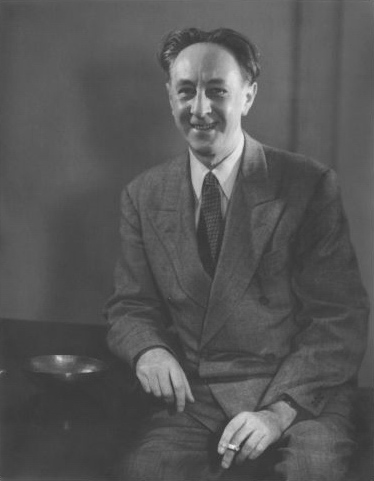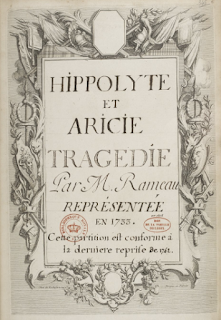Martinu - Hry o Marii (Miracles of Mary)
National Theatre (Narodni Divadlo), Prague, Monday April 22 2013
Conductor: David Švec. Production: Jiří Heřman. Sets: Pavel Svoboda. Costumes: Alexandra Grusková. Choreography: Jan Kodet. Lighting: Daniel Tesař.
The Wise and Foolish Virgins*
Archangel Gabriel: Stanislava Jirků. Leader of the Play: Jakub Gottwald. Foolish Virgin: Markéta Cukrová.
Mariken of Nijmegen
Mariken of Nijmegen: Maria Kobielska. Devil: Svatopluk Sem. Principal: Jakub Gottwald. Mascaron: Jaroslav Březina.
The Nativity
Mary: Maria Kobielska. Blacksmith: Ivan Kusnjer. Blacksmith's Daughter: Stanislava Jirků.
Sister Paskalina
Sister Paskalina: Dana Burešová . Sister Marta: Stanislava Jirků. Leader of the Play: Jakub Gottwald.
Czech National Opera Orchestra. Czech National Opera Chorus. Czech National Opera Ballet. Prague Philharmonic Choir. Kühn Children's Choir.
I admit that when I mentioned recently on Facebook that Hry o Marii seemed the most interesting option during a recent visit to Prague, I aimed to tease those who'd have made a beeline for Cosi fan Tutte at the Estates Theatre. But I had in fact looked into the matter thoroughly and decided Martinu at the Narodni was the right thing to see. Now I'm more than glad I did.
I've said before - though not often, as the occasion seldom arises - how much harder it is to do justice to an outstanding evening at the opera than to a stinker. So here I am again, stuck in front of a blank screen, wondering what to write... God knows (c'est le cas de le dire) there's every opportunity to screw up with Hry o Marii. Religion's hard to handle on the opera stage and mawkishness, pomposity or just plain ridicule beckon. Just look at Parsifal. Somehow, Jiří Heřman magically achieved just the right tone of simple piety and literal belief needed to transform these little miracle tales into radiant musical theatre. It was, as I remarked later on Facebook, a night in a hundred.
Everything was right. The Narodni itself is a lavishly gilded neo-renaissance house with lots of feathery scrolls, silver-winged angels, cherubs' heads and a particularly beautiful ceiling, but more importantly it's the perfect size (only 13 rows downstairs, surrounded with tiers of boxes à l'italienne), and has acoustics we can only dream of in Paris. The orchestra and giant chorus were simply fabulous (Slav sound) and played and sang with commitment, fluency and sure-footedness. The soloists too: strong, generous voices and experienced actors, led by Stanislava Jirků (wonderfully grainy Slav mezzo), Maria Kobielska (wonderfully silvery Slav soprano, diminutive and moving neatly and niftily like a trained dancer), Dana Burešová (wonderfully richer, bigger-voiced Slav soprano) and Jaroslav Březina (wonderfully bright, brassy Slav tenor). Not one of these excellent singers has, as far as I know, yet been made up like a tart, given big hair and pouting lips, stuffed into an absurd ball gown (least of all Březina) and marketed to the nines like soft porn by the international "music majors".
The curtain was raised by the "Leader of the Play", a young man with long blond hair, in a long, silk coat. The foolish virgins slept, in smooth pale grey, along the apron, like seals on a beach. The wise ones tended naked men (with white shorts, otherwise recalling The Ride of the Valkyrie at the Bastille, where the men are totally starkers) laid out on grey tables. Grey tables and grey benches, all much shoved around on casters, would make up most of the props throughout. The set was made up of rotating panels to the sides, at this point grey. Later they would turn to show designs or a medieval field of flowers, or transform the rear of the set into gold leafed panels from a medieval painting. The rear also opened, at holier moments, to release glorious clouds of stage steam in bright, white lights.
At the start, the chorus stood, in austere medieval black bonnets, in two storeys of boxes above us. Later (after the interval) they would reappear in beautifully detailed and tailored black-and-white, "country townspeople's" costumes - first in their boxes, then on the stage to threaten Paskalina in a noisy but disciplined country dance. All the costumes, from the nuns' flowing black and white robes and wimples to the cobalt blue wings and stiff brocades of the angel Gabriel and the equally stiff, glittering brocades of the crowned madonna, were first rate. Even the ballet, usually such a weak, wet point in opera was convincing: athletic, bearded young men in black, flapping their great coats round Mariken like great bats' or devils' wings.
Paskalina's burning at the stake was one of the best pieces of stagecraft I've ever seen, with long kebabs of rotating red flames (or think of the carpet beaters under a Hoover) rolling down thrillingly in waves before Paskalina was saved and the opera ended in a (different) blaze of chorus, organ and bells, followed by a standing ovation. Hry o Marii was thus that other kind of miracle: a night at the opera where, for once, everything goes right. A night in a hundred, as I said.
For those interested, there's a neat, short summary with photos and audio clips on this NPR page and I found one video of this production (there are more of a different one) on YouTube: watch it right through.
(Having published this report, lo and behold what did I find in a 2009 write-up of the same production on another blog? "In short, it was a night to remember." So it must have been!)
*Reminds me of an ancient joke. Why wasn't Jesus born in Ireland? Because they couldn't find three wise men and a virgin.
Conductor: David Švec. Production: Jiří Heřman. Sets: Pavel Svoboda. Costumes: Alexandra Grusková. Choreography: Jan Kodet. Lighting: Daniel Tesař.
The Wise and Foolish Virgins*
Archangel Gabriel: Stanislava Jirků. Leader of the Play: Jakub Gottwald. Foolish Virgin: Markéta Cukrová.
Mariken of Nijmegen
Mariken of Nijmegen: Maria Kobielska. Devil: Svatopluk Sem. Principal: Jakub Gottwald. Mascaron: Jaroslav Březina.
The Nativity
Mary: Maria Kobielska. Blacksmith: Ivan Kusnjer. Blacksmith's Daughter: Stanislava Jirků.
Sister Paskalina
Sister Paskalina: Dana Burešová . Sister Marta: Stanislava Jirků. Leader of the Play: Jakub Gottwald.
Czech National Opera Orchestra. Czech National Opera Chorus. Czech National Opera Ballet. Prague Philharmonic Choir. Kühn Children's Choir.
I admit that when I mentioned recently on Facebook that Hry o Marii seemed the most interesting option during a recent visit to Prague, I aimed to tease those who'd have made a beeline for Cosi fan Tutte at the Estates Theatre. But I had in fact looked into the matter thoroughly and decided Martinu at the Narodni was the right thing to see. Now I'm more than glad I did.
 |
| Bohuslav Martinů |
Everything was right. The Narodni itself is a lavishly gilded neo-renaissance house with lots of feathery scrolls, silver-winged angels, cherubs' heads and a particularly beautiful ceiling, but more importantly it's the perfect size (only 13 rows downstairs, surrounded with tiers of boxes à l'italienne), and has acoustics we can only dream of in Paris. The orchestra and giant chorus were simply fabulous (Slav sound) and played and sang with commitment, fluency and sure-footedness. The soloists too: strong, generous voices and experienced actors, led by Stanislava Jirků (wonderfully grainy Slav mezzo), Maria Kobielska (wonderfully silvery Slav soprano, diminutive and moving neatly and niftily like a trained dancer), Dana Burešová (wonderfully richer, bigger-voiced Slav soprano) and Jaroslav Březina (wonderfully bright, brassy Slav tenor). Not one of these excellent singers has, as far as I know, yet been made up like a tart, given big hair and pouting lips, stuffed into an absurd ball gown (least of all Březina) and marketed to the nines like soft porn by the international "music majors".
The curtain was raised by the "Leader of the Play", a young man with long blond hair, in a long, silk coat. The foolish virgins slept, in smooth pale grey, along the apron, like seals on a beach. The wise ones tended naked men (with white shorts, otherwise recalling The Ride of the Valkyrie at the Bastille, where the men are totally starkers) laid out on grey tables. Grey tables and grey benches, all much shoved around on casters, would make up most of the props throughout. The set was made up of rotating panels to the sides, at this point grey. Later they would turn to show designs or a medieval field of flowers, or transform the rear of the set into gold leafed panels from a medieval painting. The rear also opened, at holier moments, to release glorious clouds of stage steam in bright, white lights.
At the start, the chorus stood, in austere medieval black bonnets, in two storeys of boxes above us. Later (after the interval) they would reappear in beautifully detailed and tailored black-and-white, "country townspeople's" costumes - first in their boxes, then on the stage to threaten Paskalina in a noisy but disciplined country dance. All the costumes, from the nuns' flowing black and white robes and wimples to the cobalt blue wings and stiff brocades of the angel Gabriel and the equally stiff, glittering brocades of the crowned madonna, were first rate. Even the ballet, usually such a weak, wet point in opera was convincing: athletic, bearded young men in black, flapping their great coats round Mariken like great bats' or devils' wings.
Paskalina's burning at the stake was one of the best pieces of stagecraft I've ever seen, with long kebabs of rotating red flames (or think of the carpet beaters under a Hoover) rolling down thrillingly in waves before Paskalina was saved and the opera ended in a (different) blaze of chorus, organ and bells, followed by a standing ovation. Hry o Marii was thus that other kind of miracle: a night at the opera where, for once, everything goes right. A night in a hundred, as I said.
For those interested, there's a neat, short summary with photos and audio clips on this NPR page and I found one video of this production (there are more of a different one) on YouTube: watch it right through.
(Having published this report, lo and behold what did I find in a 2009 write-up of the same production on another blog? "In short, it was a night to remember." So it must have been!)
*Reminds me of an ancient joke. Why wasn't Jesus born in Ireland? Because they couldn't find three wise men and a virgin.




Comments
Post a Comment